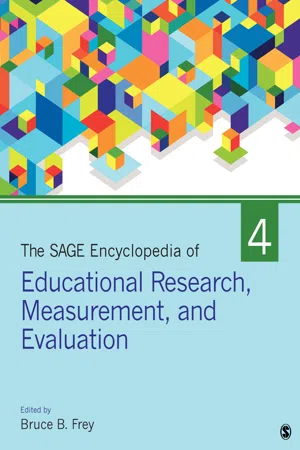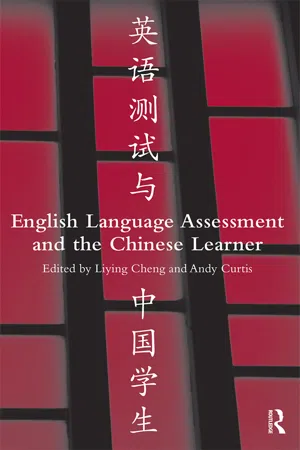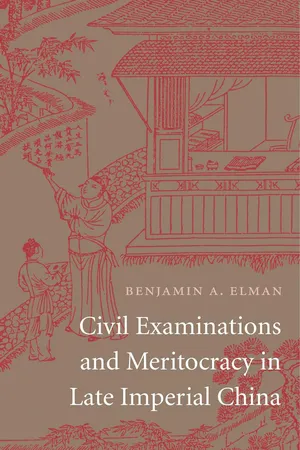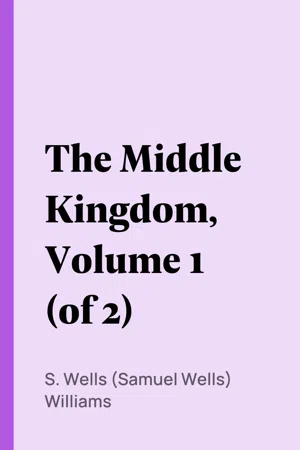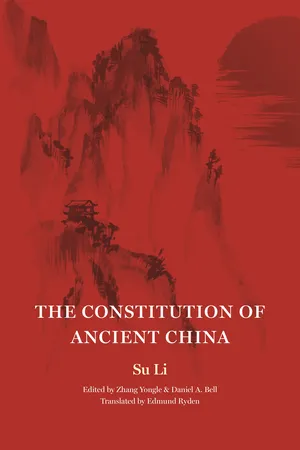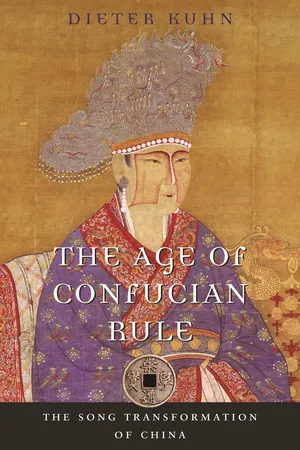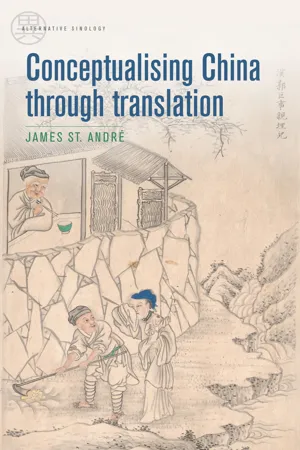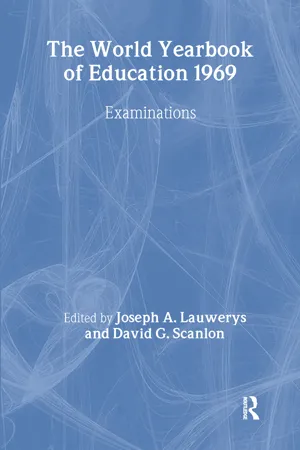History
Imperial Examination
The Imperial Examination was a system in ancient China used to select candidates for the state bureaucracy based on their knowledge of Confucian classics and literary skills. It was a key institution for social mobility and political stability, as it allowed individuals from lower social classes to attain prestigious government positions through merit rather than birthright.
Written by Perlego with AI-assistance
Related key terms
Related key terms
1 of 4
Related key terms
1 of 3
10 Key excerpts on "Imperial Examination"
- Bruce B. Frey(Author)
- 2018(Publication Date)
- SAGE Publications, Inc(Publisher)
As early as the Zhou Dynasty (1046–249 BCE), citizens were given a promotion within the bureaucratic structure of the Emperor’s court based upon demonstrated skill in archery. It was not, however, until the Sui Dynasty (581–618 CE) that a system requiring performance on a written examination, as well as martial arts and archery, emerged to sort capable citizens into leadership positions in the Imperial court. These early civil service examinations required citizens from different precincts and regions to participate in standardized written, oral, and observed examinations of one’s ability to recite important moral and philosophical arguments, recite texts the Emperor wrote, and perform martial and military arts. The use of the Imperial Examination system was a direct result of social shifts away from a feudal system of patronage as a means to gain improved social status toward a more meritorious system. Test takers from each precinct would engage in the same test, which occurred in regular cycles and contained the same questions and instructions administered by specially trained test administrators. Each test progressed in difficulty, with the highest level, the Palace Examination, often being supervised by the Emperor.During the Song Dynasty (960–1279), the school system was expanded considerably and along with it, the Imperial Examination system. In this time frame, the examinations contained standardized tests administered at the district, provincial, and metropolitan levels and were attached to the bestowing of an educational credential. Strict quotas allowed only a small number of test takers to pass each exam, and students often took the tests multiple times before passing them, often waiting three or more years before the next test cycle.Exams were a test of the candidates’ physical abilities and intellect. By 115 CE, during the Han Dynasty, the school curriculum and examinations focused on music, math, writing, Chinese traditions and ceremonies, archery, and horsemanship. The curriculum and exam would eventually evolve to also include militaristic strategy, civil law, taxation, agriculture, geography, and Confucian philosophy. Following each examination a test proctor “called the roll” and announced each test taker’s scores, a practice familiar to modern instructors. The most accomplished students were said to take on God-like qualities once passing the highest levels of exams. This was due, in large part, to the fact that each exam was a grueling, 3-day experience. Across 3 days and 2 nights, exam takers were ushered to a tiny, outdoor cubicle wherein he would replicate the exact text of an entire essay made available from the Emperor. No interruptions were allowed. Candidates had to supply their own food, water, and bedding. If bad weather was present, tests were not rescheduled. Instead, test takers would simply have to make do with the constraints given them. Occasionally, test takers died during the exams and their bodies were simply thrown over the walls of the grounds so as not to distract other test takers.- Liying Cheng, Andy Curtis, Liying Cheng, Andy Curtis(Authors)
- 2010(Publication Date)
- Routledge(Publisher)
The Imperial Examinations in dynastic China were the first of their kind used to select the highest officials in the country. These examinations determined positions in the civil service based on merit and education, which promoted upward mobility among the population for centuries. Therefore, the term “civil service examinations” is also sometimes used to refer to the Imperial Examination system in China. These examinations are regarded by many historians as the first standardized tests based on merit (Hu, 1984; Lai, 1970) and constitute the largest contribution that ancient China made to the testing movement (Higgins & Sun, 2002).Content, Format, Candidature, Administration, and Fairness of the Imperial Examinations
The Contents and Categories of the Examinations
As mentioned earlier, the contents and categories of the Imperial Examination system changed over time (Higgins & Sun, 2002). For instance, in the Tang Dynasty (618–906), the examinations in different categories ( Ke) were held in the capital. The six most important categories in the examinations were: (1) “cultivated talent” ( Xiou Cai) also known as Scholar;1 (2) “presented scholars” ( Jin Shi); (3) the Confucian classics ( Ming Jin); (4) law ( Ming Fa); (5) calligraphy (and literacy) ( Ming Shu); and (6) mathematics ( Ming Suan) (Wang, 2003). There were other minor categories as well. A great majority of candidates chose the Confucian classics (Franke, 1960). In the Song Dynasty (960–1279), the five categories of the examinations were letters ( Jin Shi), law, history, rituals, and classics (Kracke, 1953; Wang, 2003). A great majority of examination candidates chose the Jin Shi examination. In the Jin Shi examination, Confucian classics such as the Four Books and Five Classics were basic examination materials. The Four Books were: The Great Learning The Doctrine of the Mean The Analects and The Mencius The Five Classics were: Classic of Changes Classic of Poetry Classic of Rites Classic of History and Spring and Autumn Annals- eBook - ePub
The Class of 1761
Examinations, State, and Elites in Eighteenth-Century China
- Iona Man-Cheong(Author)
- 2004(Publication Date)
- Stanford University Press(Publisher)
In the imperial Chinese examination system, as in modern examination practice, examiners applied a scrutiny as diagnostic as any associated with medical practice; one that determined whether the subject had absorbed and applied the requisite knowledge and distinctions. Thus, besides literally undergoing a body search, the candidate also had his mental “luggage” searched. The most crucial effect of this system was thus the training of loyal, obedient subjects, inculcated with the behaviors, values, and principles of government deemed appropriate for servants of the state. It would, however, be a mistake to assume that this disciplinary process was unilateral in scope. Imperial Examinations occurred within and between sets of vibrant state-society relations. Interacting with the more contingent elements of court politics, intellectual fashions, and social ambitions, examinations become a site of collaboration, contestation, and conflict. It is in this context that examinations also become historically specific. When investigated within the contingencies of both imperial policy and, in the eighteenth century, a growing, multicultural, multiethnic empire ruled by a minority group, practice diverges sharply from typically static, descriptive accounts of structures and institutional functions. These sets of concerns shape the main thrust of this book.The most challenging question about the imperial Chinese examination system is not how the system worked—the several available institutional studies are excellent and provide more than adequate answers—but rather, what the system meant.3 Thirty years ago, Chang Chung-li and Ho Ping-ti both argued that examinations determined membership in the Chinese gentry—a rather anomalous concept, since, unlike in Britain, the gentry was not an exclusively land-based social class, but rather an elite for whom both cultural and other economic capital were significant and for whom, in the final analysis, cultural capital remained decisive.4 In fact, subsequent work has shown that the elite controlled a diverse number of resources that it deployed through various strategies to achieve and maintain its preeminent socio-economic position.5 - Benjamin A. Elman(Author)
- 2013(Publication Date)
- Harvard University Press(Publisher)
In this and the next chapter, I will describe the sociopolitical consequences of the Ming expansion as it pertained principally to the civil service. Later chapters will describe the interaction between the examination marketplace and elite cultural history. The nitty-gritty aspects of the examination process and its institutional evolution produced unforeseen social, political, economic, and cultural consequences that a functional or teleological analysis of its institutional parts cannot explain. The historical consequences of the examination regime and its original intended functions are analytically distinct.Except for the pioneering work of Ping-ti Ho, studies of late imperial civil examinations have dismissed them as an institutional obstacle to modernization. A more comprehensive view reveals that there were no a priori reasons that the gentry-official managerial elite reproduced by the examination regime before 1850 were by definition inefficient as political and social managers in a preindustrial society.2 If we evaluate literati education solely in light of modern goals of academic specialization and economic productivity, then the social and political interactions between elite culture and imperial institutions are misrepresented historically. Where developments are comparable for both the Ming and Qing dynasties, I will describe events and processes that tell us about both while at the same time highlighting notable differences. Where the Qing significantly altered the Ming civil examinations or its practice after 1644 significantly changed, I will save that analysis for later chapters, which focus on the last stages of its development up to 1850, before the final demise of the civil examinations in 1905.Political Reproduction of Officials
The Ming dynasty bureaucracy reproduced itself through a selection and appointment system that according to the official Ming History (Mingshi) had four major components: dynastic schools, civil and military examinations, recommendation, and appointment. The Song selection and appointment process had six aspects: examinations, schools, appointment, protection privilege, sponsored appointment, and evaluation. Although the Ming and Qing maintained a merit-rating review process comparable to the Song, other aspects, such as the protection policy and sponsored appointment to enhance family continuity, were curtailed in the late empire to keep the system’s circulation of elites healthy and vibrant.3- eBook - ePub
The Middle Kingdom, Volume 1 (of 2)
A Survey of the Geography, Government, Literature, Social Life, Arts, and History of the Chinese Empire and its Inhabitants
- S. Wells (Samuel Wells) Williams(Author)
- 2018(Publication Date)
- Perlego(Publisher)
[285] Manchus and Mongols compete at these trials with the Chinese, but many facts show that the former are generally favored at the expense of the latter; the large proportion of men belonging to these races filling high offices indicates who are the rulers of the land. The candidates are all examined at Peking; one instance is recorded of a Chinese who passed himself off for a Manchu, but afterward confessed the dissimulation; the head of the division was tried in consequence of his oversight. It is the professed policy of the government to discourage literary pursuits among them, in order to maintain the ancient energy of the race; but where the real power is lodged in the hands of civilians, it is impossible to prevent so powerful a component of the population from competing with the others for its possession.COMPETITIVE EXAMINATIONS OF THE MILITARY.The present dynasty introduced examinations and gradations among the troops on the same principles as obtain in the civil service; nothing more strikingly proves the power of literary pursuits in China, than this vain attempt to harmonize the profession of arms in all its branches with them. Their enemies were, however, no better disciplined and equipped than they themselves were. Candidates for the first degree present themselves before the district magistrate, with proper testimonials and securities. On certain days they are collected on the parade-grounds, and exhibit their skill in archery (on foot and in the saddle), in wielding swords and lifting weights, graduated to test their muscle. The successful men are assembled afterward before the prefect; and again at a third trial before the literary chancellor, who at the last tripos tests them on their literary attainments, before giving them their degrees of siu-tsai. The number of successful military siu-tsai is the same as the literary. They are triennially called together by the governor at the provincial capital to undergo further examination for kü-jin in four successive trials of the same nature. These occasions are usually great gala days, and three or four scores of young warriors who carry off prizes at these tournaments receive honors and degrees in much the same style as their literary compeers. The trials for the highest degree are held at Peking; and the long-continued efforts in this service generally obtain for the young men posts in the body-guard of the governors or staff appointments. The forty-nine successful candidates out of several thousands at the triennial examination for kü-jin in Canton, November, 1832, all hit the target on foot six times successively, and on horseback six times; once with the arrow they hit a ball lying on the ground as they passed it at a gallop; and all were of the first class in wielding the iron-handled battle-axe, and lifting the stone-loaded beam. The candidates are all persons of property, who find their own horses, dresses, arms, etc., and are handsomely dressed, the horses, trimmings, and accoutrements in good order—the arrows being without barbs, to prevent accidents. One observer says, “the marks at which they fired, covered with white paper, were about the height of a man and somewhat wider, placed at intervals of fifty yards; the object was to strike these marks successively with their three arrows, the horses being kept at full speed. Although the bull’s-eye was not always hit, the target was never missed: the distance did not exceed fifteen or twenty feet.”[286] - eBook - ePub
The Princeton-China Series
Not Assigned
- Su Li, Zhang Yongle, Daniel A. Bell, Edmund Ryden(Authors)
- 2018(Publication Date)
- Princeton University Press(Publisher)
Overall, it is accepted that there were two political measures that led to the historic transition from the recommendation system of selecting talent to the examination system. The first is that the Sui abolished the middle administrative level of the prefectures, commanderies, and counties and thus reduced the tiers of government. This measure cut the ground from under the system of recommendation of talent by the commanderies that had been in place since the Western Han. The second is that the Sui strengthened the central authority. Under the Sui, officials in the prefectures and counties were not permitted to name their subordinates themselves since this task was assigned to the Ministry of Personnel and thus coordinated by the center. This meant that the central government had to find another reliable and effective way of choosing even more officials. But aside from this, one important premise lay in the culture of society, namely, that the practice of central government from the Qin and Han onward included unification of the script and promotion of the refined language of the central plain. These measures had already accumulated cultural results at the institutional level in society. Moreover, the more than seven hundred years of institutional practice of the selection of officials by the selection and recommendation systems begun by Emperor Wu of the Han as well as the choice of Confucianism alone had already spread throughout the whole country and had gradually penetrated all levels of society. Taken together, this was an important institutional condition for the foundation of a system of selection of a political and cultural elite that was wholly dependent on writing, independent of other social interest groups, and completely under the central government. A statewide standard was also provided that ensured the social environment within which the Imperial Examinations could take place.Compared to the selection system of the Han dynasty and the recommendation system of the Wei and Jin, a special characteristic of the Imperial Examination system is that scholars applied of their own free will and success or failure was largely decided by their score on the written exam. From a constitutional point of view, the main institutional change was that it strengthened the central government’s control of the selection of talent, meaning that the various levels or groupings of power in society no longer had an institutional influence - eBook - ePub
The Age of Confucian Rule
The Song Transformation of China
- Dieter Kuhn, Timothy Brook, Timothy Brook(Authors)
- 2011(Publication Date)
- Belknap Press(Publisher)
For individuals, the civil service examination system functioned as the door-opener for such a career, and for the Song state the examination system constituted the only methodologically sound way to recruit officials for all levels and fields of the bureaucracy. An edict of 989 confirms the exclusiveness of the examinations for the shi class: “The establishing of the examinations serves the class of scholars.” 5 Tang emperors first promoted the examination system in the seventh century in order to curb the political power of the military aristocracy. Holders of the highest degree, the jinshi, who made up only 7 percent of chief councilors serving under Emperor Gaozu in the first half of the seventh century, rose to 40 percent during the rule of Empress Wu Zetian half a century later. Yet over 90 percent of Tang officials did not enter the civil service via examinations but got their positions through the traditional and well-developed recommendation system. 6 In Song times, candidates sitting for the civil service exams numbered not in the hundreds as in the Tang but in the hundreds of thousands. The first of these tests was the prefectural examination, which was conducted by local officials in early autumn. Graduates who passed this test were qualified for employment as teachers in local or family schools, as administrators of granaries or temples, and as subofficial local administrators. By the middle of the twelfth century, roughly 100,000 candidates registered for the prefectural examination each year, and in the middle of the thirteenth century it reached 400,000 or more. Those sitting for the prefectural degree for the first time had not only to present a declaration of surety issued by the county administration but were also required to study for at least 300 days in a school - eBook - ePub
Schooled and Sorted
How Educational Categories Create Inequality
- Thurston Domina, Andrew M. Penner, Emily K. Penner(Authors)
- 2023(Publication Date)
- Russell Sage Foundation(Publisher)
Clearly the tests and the mastery of Confucian philosophy that it assessed held a privileged position in Chinese culture. As the oft-repeated aphorism had it, “All ten thousand vocations are lowly, book reading alone is noble.” 9 Cultural explanations alone, however, fail to account for the fact that the exams overshadowed the content they were testing: knowledge of the teachings of Confucius. In a statement echoing contemporary concerns regarding high-stakes testing, Emperor Qianlong noted in an imperial edict of 1740 (quoting the Confucian scholar Zhu Xi) that “if Confucius were alive today, he would have to take part in the civil service examinations, but examinations would have deterred Confucius from striving to be a sage.” 10 In part, the centrality of the examination system was maintained by its monopoly on upward mobility and the societal rewards that came to those who earned this educational credential. This monopoly, coupled with its exclusivity, made the examination system’s legitimacy self-fulfilling. Because so many failed the exams, passing was a mark of distinction. And because passing the exams ensured entrée to the elite, prior generations’ accomplishments reinforced the test’s status. It’s easy to spot the parallels between the Chinese examination system and the education system in the contemporary United States. 11 Just as Chinese scholars needed to prove their mettle on the exams to enter the elite, contemporary American youth must be able to demonstrate their academic ability if they are to access many of our society’s most sought-after positions. Further, the contemporary American educational system wraps itself in the mantle of “merit,” associating educational success with moral worth in much the same way as the Chinese examination system did - eBook - ePub
- James St André(Author)
- 2023(Publication Date)
- Manchester University Press(Publisher)
1856 , xxii–xxiii). Meadows outlines his idea of how to implement such a system on a much wider scale in Britain, and then goes on to reiterate the advantages he sees in such a system (xxv–xlviii). Furthermore, in the main body of the book, he argues that, just as there is ‘an intimate connection between “ignorance and vice”, so on the other hand high intellectual faculties are, as a general rule (which the exceptions but prove) associated with moral elevation’ and therefore the use of examinations will identify not only the talented, but also the virtuous (21). This may be seen as an attempt to answer charges, as we will see below, that examinations are precisely incapable of that function.Teng traces the development of various types of examinations in Great Britain and its colonies. As Foucault has argued, colonial possessions were often the site of experiments in modernisations that were then later imported into the home country (Foucault 2003 , 103; see also Lloyd 2011 ). This was also true of the civil service examinations. The East India Company’s training college Haileybury, designed to train men up for service in overseas posts, had examinations as early as 1806, and in 1833 there was a regularised system of civil service examinations for the Indian civil service extending beyond that college. By 1850 the Indian Civil Service had a full-blown competitive examination system; fifteen years later Britain followed suit at home.Debates in Parliament, as recorded in Hansard’s Parliamentary Debates, were long and protracted, with advocates of patronage fighting a rearguard movement to preserve the privilege of patronage for as long as possible in whatever form possible. The process of adopting a civil service examination in Britain thus proceeded by stages, with various combinations of patronage and examinations being used together. One worked by allowing patrons to nominate a limited number of candidates for a post (say, three), and then having an examination to decide which of the three got the job; another had a dozen or more candidates nominated by patronage, followed by an examination to determine the top five or six candidates, who would then be proposed for heads of departments to select from for posts in their offices; another had an open examination, after which the head of department was allowed to choose which of the highest scoring candidates would get the job.Throughout the debate, proponents of an examination system sought to portray the existing system of patronage in the worst possible light. Terms such as ‘favouritism’, ‘nepotism’, ‘bribery’, ‘irresponsible family patronage’, [abuse of] ‘power’, ‘corruption’, and ‘jobbing’ occur frequently (see for example Hansard’s Parliamentary Debates, series 3 [1829–92 - eBook - ePub
World Yearbook of Education 1969
Examinations
- Joseph A. Lauwerys, David G. Scanlon, Joseph A. Lauwerys, David G. Scanlon(Authors)
- 2013(Publication Date)
- Routledge(Publisher)
A classical viewpoint of examinations in Iran is its dispanriminatory nature. An examination was always regarded as a means of proving one’s distinction, innocence, or expected achievement. A famous Persian poem reads ‘it is nice to have the examinations performed so that the guilty be ashamed’. This particular verse embodies the philosophy and nature of classical examinations. It is something that one tries in order to prove something to others. There is no force, regulation, formality or universality attached to it. Examinations were looked upon as a demonstration performed by certain volunteers to create admiration and applause. It was the final phase of a training or educational process. It was done mostly for others to notice, and not for the examinee or examiner, who were both completely assured of the end result well in advance. Therefore, traditional examinations in Iran were occasional tests for the assessment of individuals’ qualifications. By its very nature, they were mostly performed in an oral or performance manner so that the jury as well as the audience could see and enjoy the occasion. If they were related to knowledge, they took the form of eloquent oratory, and were interupted from time to time by loud applause from all those present. If they were performances they were like shows or contests with all the usual environmental arrangements.There are no records showing that any formal examinations of a specific type were performed for very distinctive purposes such as the examinations for entry into civil or military service as in some other countries like China.Formal Examinations
Formal examinations were introduced in Iran with Western-type education towards the end of the nineteenth century.2 As a distinctive feature of modern education, examinations were conducted under very strict dispanipline almost as precise as a military control. They were and still are considered as barriers on the route a pupil should cover. The pupil therefore, is expected to pass over the barrier to show that he has gained enough competence through his learning. In this sense, examinations are performed as a device for elimination, those who fail being looked down upon and considered unfit for academic pursuit.One has to try as many times as possible to pass through these barriers in order to prove himself capable. In other words, an individual life in Iran is nothing but a long series of examinations starting around the age of six or seven, repeated several times every year up to the time he wants to enter some kind of government or official service. As every school year is divided by examinations, school terms or semesters are nothing but seasons for examinations. Students are always concerned about how the examination will take place and what will be required of them. That is the first question at the beginning of every course put to the teacher or instructor. Everybody is concerned with what that instructor will be planning to ask at the time of examination. After they manage to get this goal clarified, they start working backwards to try to see how they can reduce this load over the intended period before the time of the examination.
Index pages curate the most relevant extracts from our library of academic textbooks. They’ve been created using an in-house natural language model (NLM), each adding context and meaning to key research topics.
Explore more topic indexes
Explore more topic indexes
1 of 6
Explore more topic indexes
1 of 4
